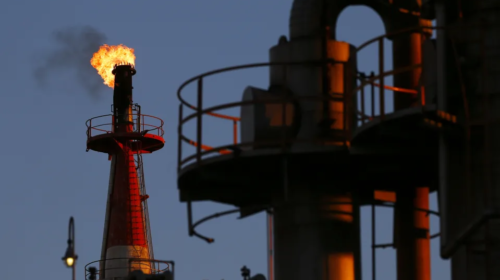Oil prices traded to a more than seven-year high amid supply fears following a drone attack in Abu Dhabi which set off explosions in fuel trucks and stirred geopolitical tensions in the region.
Brent crude futures ($BZ=F) rose $1.28 (£0.94), or 1.49%, to $87.34 a barrel on Tuesday morning, while US West Texas Intermediate ($CL=F) crude futures jumped $1.20, or 1.43%, from Friday’s settlement to $85.02 a barrel. Monday was a bank holiday in the US.
Overall, oil prices climbed more than 10% since the start of the year, hitting levels not seen since 2014.
Three fuel trucks exploded and a fire broke out near storage facilities of oil firm ADNO on Monday in a drone attack that Yemen’s Iran-aligned Houthi group said was an attack deep inside the United Arab Emirates (UAE).
The Houthi movement has said it could target more facilities, with the UAE responding that it reserved the right to “respond to these terrorist attacks.”
Analysts said the oil rally is unlikely to ease as the output continues to fall short.
Oil prices are edging higher again at the start of the week as it continues its remarkable run since bottoming in early December. Prices are “up more than 30% over that time and there still appears to be momentum in the move,” OANDA analyst Craig Erlam said.
The surging oil prices provided a tailwind for the sector, with BP (BP.L) and Shell (RDSB.L) trading near the top of the FTSE 100 (^FTSE).
Prices rest on the ability of OPEC+ to deliver the 400,000 barrels per day increase each month, he said. “The evidence suggests it’s not that straightforward and the group is missing the targets by a large margin after a period of underinvestment and outages. That should continue to be supportive for oil and increase talk of triple-figure prices.”
Ash Glover at CMC Markets said analysts’ forecasts expect demand to outstrip supply this year as the world opens up from two years of lockdowns and resumes a more normal trajectory for demand.








